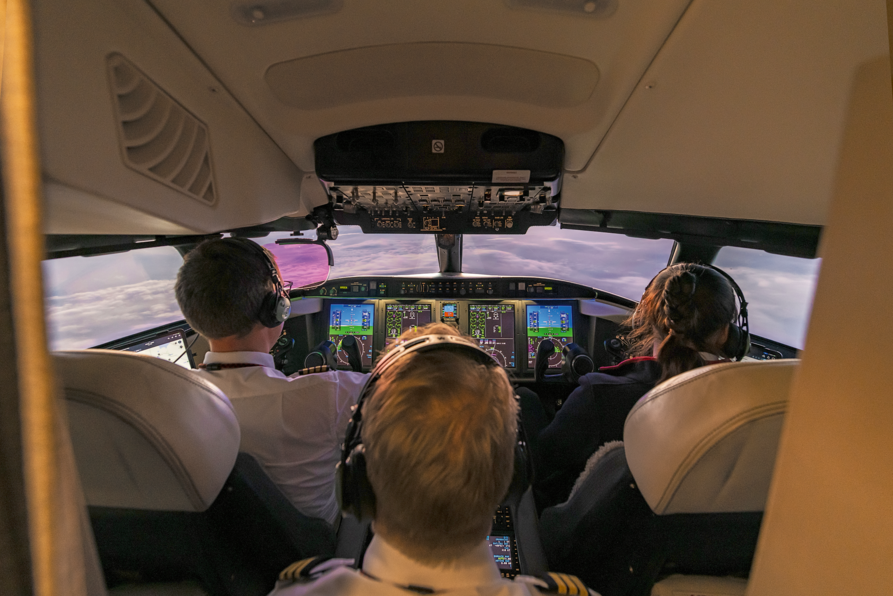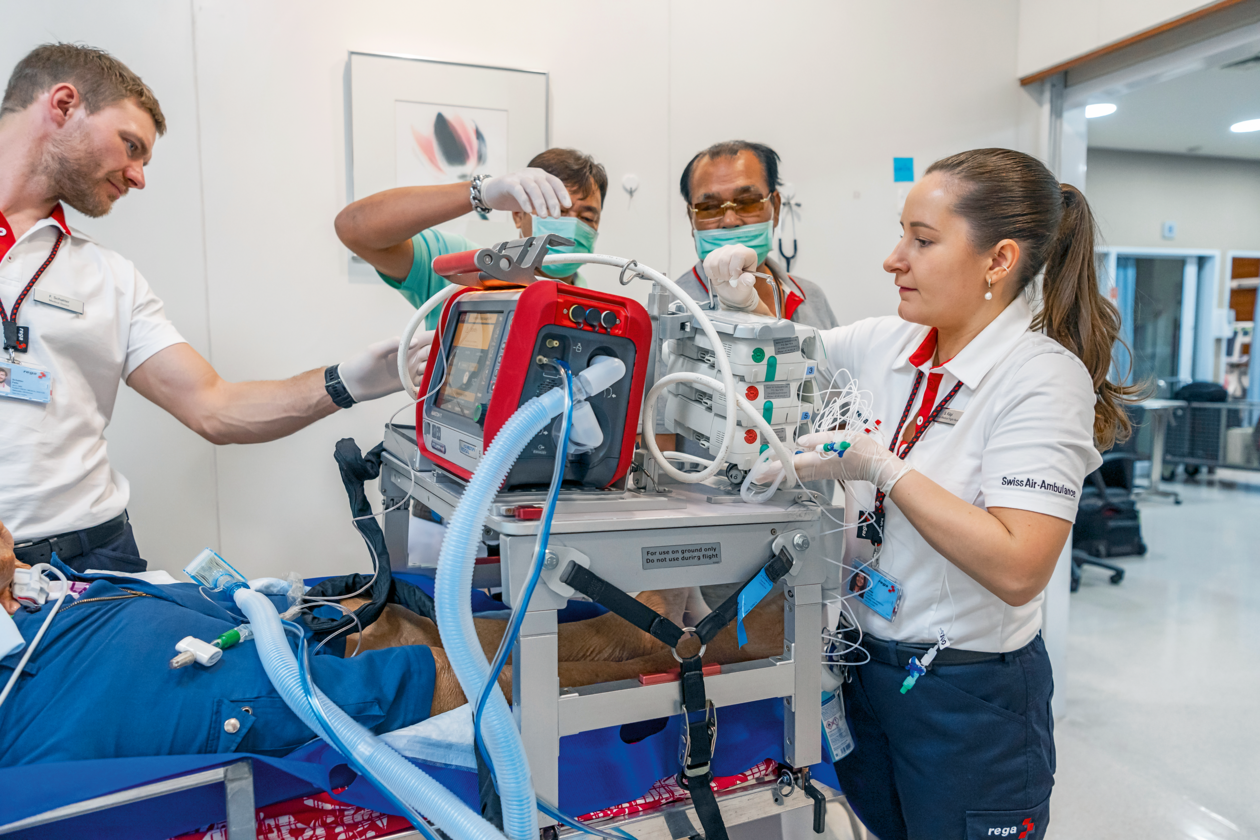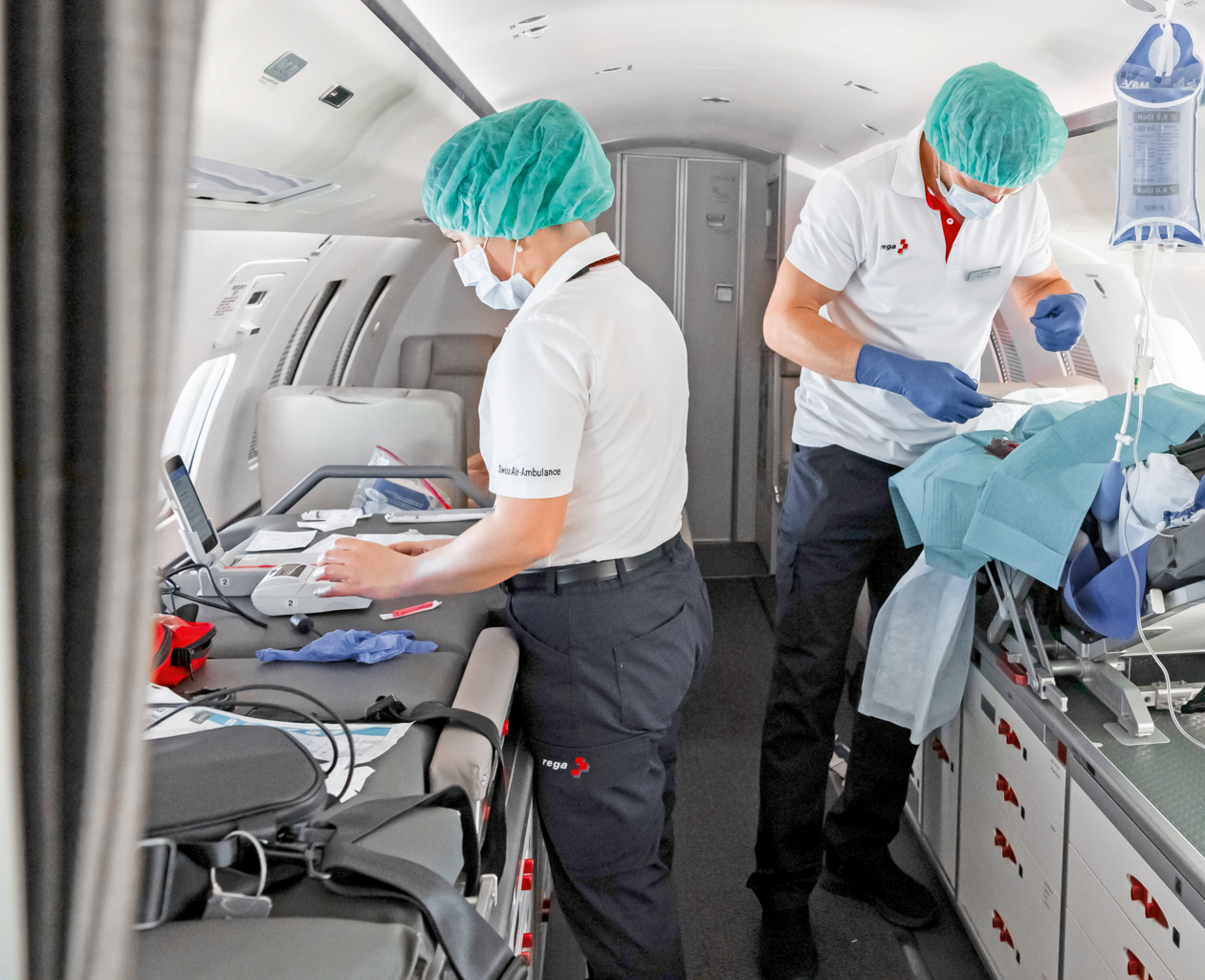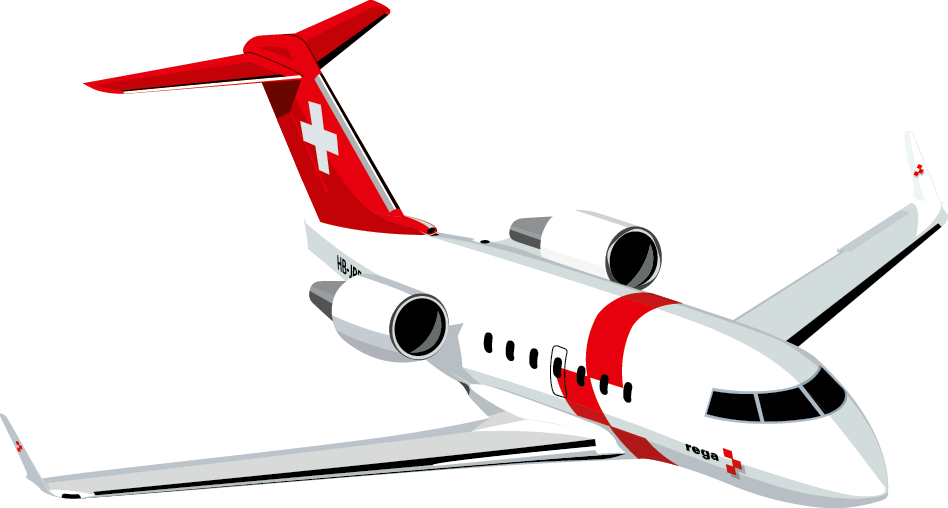Arranging the ambulance
As the permissions come in one by one, the team concentrates on all the other puzzle pieces such as the refuelling stop for the Rega ambulance jet in Mary (Turkmenistan), a taxi to take the crew from Rayong Airport (Thailand) to the hotel, and last but not least the ambulance, which will transport the patient from the hospital to the jet. Finally, the night before the mission, the flight coordinator summons the crew. Due to the long flight time, three pilots are required. They will take it in turns in the cockpit on the flight to Thailand. The team also includes a physician and an intensive care flight nurse.
Flying without air traffic controllers
The Rega jet refuels on the first stopover in Mary. The handling personnel are on hand and actively help out. Within less than an hour, the crew is back in the air over Afghanistan. “There’s no controlled airspace here. This means that there are no air traffic controllers on the ground to monitor our flight. Instead, we have to communicate our position every five minutes, while also listening in to make sure we’re aware of any other air traffic until we reach Pakistan”, explains Raphael Jenni.




